Traducción generada automáticamente
Mostrar original
Mostrar traducción
Oil on panel by Henri Montassier (French 1880-1946)
This elongated nude is one of Montassier’s most sensual works. On a neutral background in an alcove , which contrasts with the impression of softness that emerges from the shape and position of the cushions, Montassier placed a naked young woman, lying on a colored sheet, the body on the right side, the head placed on her cushion. The young woman seems asleep and peaceful her shoes at the edge of the bed.
Montassier painted the nude indoors in the manner of Goya or Manet.
This painting from 1910 won numerous awards at exhibitions around the world. The painting was exhibited in Paris, New York and Tokyo.
Henri Montassier, son of Marthe Fauche and Albert Montassier, notary at Courlon, was born on June 27, 1880
The young Henri attended the communal school of Pontoise then was admitted to the high school of Sens where he distinguished himself during his schooling by obtaining many taken drawings. At 18, in 1898, he passed his baccalaureate in series letters and philosophy. Despite his growing sensibility and artistic taste, his father enrolled him in the Faculty of Law in Paris. Albert still thinks, at that moment, that his son will succeed him at the head of the study with a license and a doctorate in his pocket.
But in 1900, 20-year-old Henri discovered the pleasures of the capital and felt more attracted to museums than to the Law School. Armed with a letter of recommendation from Eugène Petit, the mayor of Pont, he passed the entrance examination to the Banque de France in 1902, and joined forces with Luc Olivier Merson, a renowned artist who taught at the Beaux-Arts. Shortly afterwards, Henri was admitted to the master’s workshop. In 1906, he finally resigned from the bank. Without regret. If not to see his father’s hopes vanish forever. He will not be a notary in Pont-sur-Yonne.
During the Great War, he supported the fighters with artistic contributions. In 1917, Henri Montassier met Céline Rambach. It was love at first sight. They married in Paris in February 1918. Céline’s father believes a lot in the painting of her son-in-law and helps the young couple to settle down comfortably. What Céline and Henri do when they move into the 17th arrondissement of Paris, in an apartment with a beautiful studio.
Renowned painter and illustrator, he took part in numerous exhibitions: Salon des Artistes français (gold and silver medal), Salon d'Automne (vice-president), Salon des Indépendants… He exhibited in the provinces but also in London, Munich, Geneva, Brussels, the United States and Japan. Knight of the Legion of Honour in 1932, he obtained the Heiner Prize in 1937, rewarding a French artist, painter of figures; diploma of honour at the International Exhibition the same year. Between 1920 and 1940, Henri Montassier worked extensively. He painted large paintings, nudes, portraits, landscapes… His paintings are very often bought by the State during various exhibitions. He worked for L'Illustration (1927, 1929, 1935 in particular) and illustrated literary works, including a very fine edition of Beaumarchais' «Mariage de Figaro» (1928). During this period between the two wars, Henri Montassier travelled extensively, in France, but also in Italy, in Tunisia… He brings back from his travels many landscapes that can be found today through the auctions.
Henri Montassier The Impressionist:
Impressionist painters, who want to paint of the concrete and the living, choose their subjects in the landscapes or the daily scenes of contemporary life freely interpreted and recreated according to the vision and the personal sensitivity of each of them. For the first time, they will not take only sketches of the landscape and then complete their work in their workshop. Working on the spot and «on the motif», as often the painters of the school of Barbizon, as some English landscapers, as Eugène Boudin or Johan Barthold Jongkind, they push very far the study of the outdoors, make light and its games the essential and moving element of their painting, spreading the dark shades and the nuances elaborated to use pure colors that flickers a very divided touch. Painters of a changing nature, of a simple and quiet life grasped in the particularity and truth of the moment, they are indifferent to the search, dear to the classics, of the ideal of the beautiful and the eternal essence of things. Among the main representatives of the impressionist movement are Claude Monet, Camille Pissarro and Alfred Sisley accompanied by other artists whose respective personalities will evolve in a clearly distinct way: Auguste Renoir, Paul Cézanne, Edgar Degas, Berthe Morisot, Armand Guillaumin, Albert Lebourg, Édouard Manet, Henri Montassier, Mary Cassatt, Gustave Caillebotte.
Óleo sobre tabla de Henri Montassier (francés 1880-1946)
Este desnudo alargado es una de las obras más sensuales de Montassier. Sobre un fondo neutro en una alcoba , que contrasta con la impresión de suavidad que se desprende de la forma y la posición de los cojines, Montassier coloca a una joven desnuda, tumbada sobre una sábana de color, el cuerpo en el lado derecho, la cabeza colocada sobre su cojín. La joven parece dormida y apacigua sus zapatos en el borde de la cama.
Montassier pintó el desnudo en interiores a la manera de Goya o Manet.
Este cuadro de 1910 ganó numerosos premios en exposiciones de todo el mundo. El cuadro se expuso en París, Nueva York y Tokio.
Henri Montassier, hijo de Marthe Fauche y Albert Montassier, notario de Courlon, nació el 27 de junio de 1880
El joven Henri asistió a la escuela comunal de Pontoise y luego fue admitido en el liceo de Sens, donde se distinguió durante su escolaridad obteniendo numerosos dibujos tomados. A los 18 años, en 1898, aprobó el bachillerato en letras de serie y filosofía. A pesar de su creciente sensibilidad y gusto artístico, su padre le inscribe en la Facultad de Derecho de París. Albert sigue pensando, en ese momento, que su hijo le sucederá al frente del estudio con una licencia y un doctorado en el bolsillo.
Pero en 1900, Henri, de 20 años, descubre los placeres de la capital y se siente más atraído por los museos que por la Facultad de Derecho. Armado con una carta de recomendación de Eugène Petit, el alcalde de Pont, aprobó el examen de ingreso en la Banque de France en 1902, y se asoció con Luc Olivier Merson, un artista de renombre que daba clases en las Beaux-Arts. Poco después, Henri fue admitido en el taller del maestro. En 1906, finalmente dimite del banco. Sin lamentarlo. Si no es para ver desaparecer para siempre las esperanzas de su padre. No será notario en Pont-sur-Yonne.
Durante la Gran Guerra, apoyó a los combatientes con aportaciones artísticas. En 1917, Henri Montassier conoce a Céline Rambach. Fue un amor a primera vista. Se casaron en París en febrero de 1918. El padre de Céline cree mucho en la pintura de su yerno y ayuda a la joven pareja a establecerse cómodamente. Lo que hacen Céline y Henri cuando se instalan en el distrito 17 de París, en un apartamento con un hermoso estudio.
Pintor e ilustrador de renombre, participa en numerosas exposiciones: Salón de Artistas Franceses (medalla de oro y plata), Salón de Otoño (vicepresidente), Salón de los Independientes... Expone en provincias, pero también en Londres, Múnich, Ginebra, Bruselas, Estados Unidos y Japón. Caballero de la Legión de Honor en 1932, obtuvo el Premio Heiner en 1937, que recompensa a un artista francés, pintor de figuras; diploma de honor en la Exposición Internacional del mismo año. Entre 1920 y 1940, Henri Montassier trabajó mucho. Pinta grandes cuadros, desnudos, retratos, paisajes... Sus cuadros son comprados muy a menudo por el Estado en diversas exposiciones. Trabaja para L'Illustration (1927, 1929, 1935 en particular) e ilustra obras literarias, entre ellas una edición muy fina de "Mariage de Figaro" de Beaumarchais (1928). Durante este periodo entre las dos guerras, Henri Montassier viaja mucho, en Francia, pero también en Italia, en Túnez... Trae de sus viajes muchos paisajes que se pueden encontrar hoy en día a través de las subastas
Henri Montassier El Impresionista:
Los pintores impresionistas, que quieren pintar de lo concreto y de lo vivo, eligen sus temas en los paisajes o las escenas cotidianas de la vida contemporánea libremente interpretadas y recreadas según la visión y la sensibilidad personal de cada uno de ellos. Por primera vez, no se limitarán a tomar bocetos del paisaje para luego completar su obra en su taller. Trabajando sobre el terreno y "sobre el motivo", como a menudo los pintores de la escuela de Barbizon, como algunos paisajistas ingleses, como Eugène Boudin o Johan Barthold Jongkind, llevan muy lejos el estudio de los exteriores, hacen de la luz y de sus juegos el elemento esencial y conmovedor de su pintura, difundiendo los tonos oscuros y los matices elaborados para utilizar colores puros que destellan un toque muy dividido. Pintores de una naturaleza cambiante, de una vida simple y tranquila captada en la particularidad y la verdad del momento, son indiferentes a la búsqueda, querida por los clásicos, del ideal de lo bello y de la esencia eterna de las cosas. Entre los principales representantes del movimiento impresionista se encuentran Claude Monet, Camille Pissarro y Alfred Sisley, acompañados por otros artistas cuyas respectivas personalidades evolucionarán de forma claramente diferenciada: Auguste Renoir, Paul Cézanne, Edgar Degas, Berthe Morisot, Armand Guillaumin, Albert Lebourg, Édouard Manet, Henri Montassier, Mary Cassatt, Gustave Caillebotte.

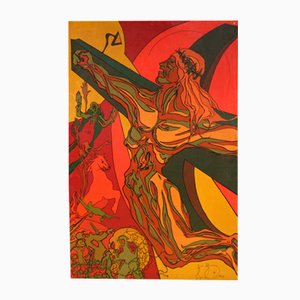








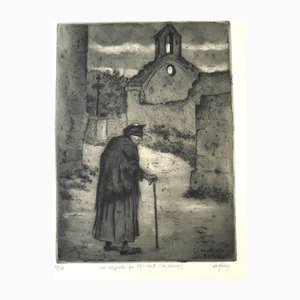
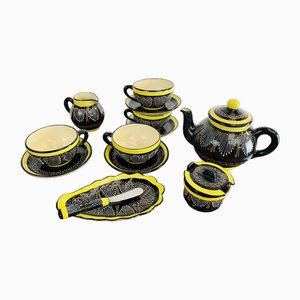
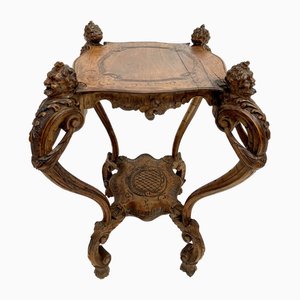




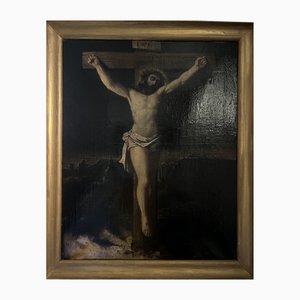
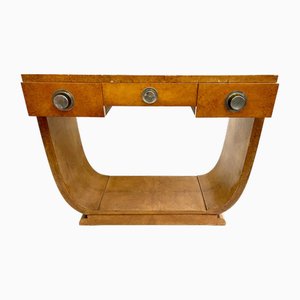
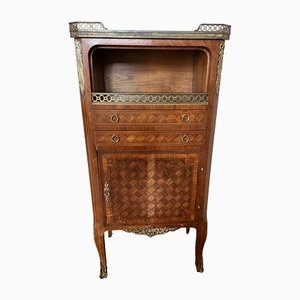

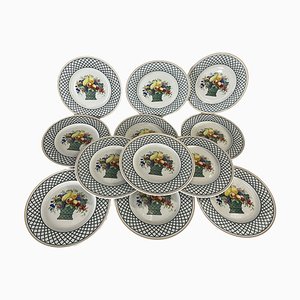
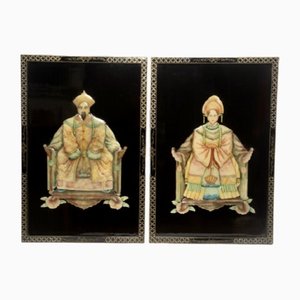
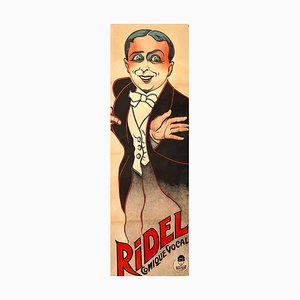
Contacta con nosotros
Haz una oferta
¡Hemos notado que eres nuevo en Pamono!
Por favor, acepta los Términos y condiciones y nuestra Política de privacidad
Contacta con nosotros
Haz una oferta
¡Ya casi está!
Para seguir la conversación en la plataforma, por favor completa el registro. Para proceder con tu oferta en la plataforma, por favor completa el registro.Exitoso
Gracias por tu consulta, alguien de nuestro equipo se pondrá en contacto contigo en breve.
Si eres profesional del diseño, por favor solicita aquí los beneficios del Programa comercial de Pamono